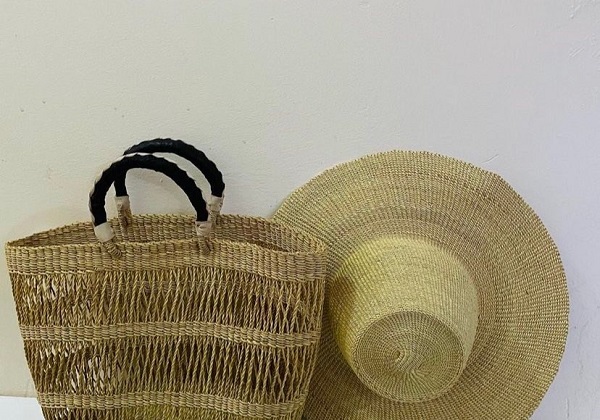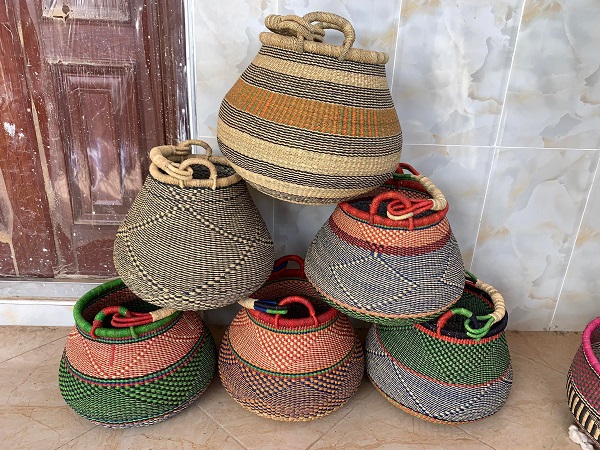
Coming home to Bolgatanga
The Upper East Region, where Bolgatanga lies, is part of what used to be known as the Upper Region.
Advertisement
Between 1902 and 1960 the Northern Territory was a British protectorate; it was separated into the Northern and Upper Region on July 1, 1960.
The Upper Region was apportioned into Upper East and Upper West Regions in 1983.
For the tourist, Bolgatanga is one big and diverse craft market. And this has its root anchored in ancient history. This northern Ghana town is connected with the olden Trans-Saharan trade route.
Along the course, handiworks of all sorts were offered for sale. This included leather goods, metal jewellery, and indigenous clothing which were all exchanged for kola nuts and salt.
Today, the Bolgatanga craft sector is still a bazaar generating not only cedis but euros and dollars. Top items include straw baskets, fans and the famous Panama-styled Bolga hats.
Down the road along Bolga’s Commercial Road (named so because it features the Ghana Commercial Bank) are handicraft cartels that are directly linked to the export market. The large off-the-road square is also a favourite spot for tourists.

So also is the aptly named Bolgatanga Craft Village which is located uptown. Crafts shops are there to serve tourists' needs.
In a sense, this name deceives. This is because one goes there with the feeling that the artisans are there busily going on with the processes. The reality here is that though crafts are marketed all over town, they are mostly made in Bolga’s surrounding suburbs.
The largest producers of leather works, straw baskets and smocks include communities such as Gwori, Sumbrungu, Zorkor, Zuarungu, Sirigu and Sherigu (please note the difference).
The artisans only come to town to sell their works at the Bolgatanga Central Market, which is most active every fourth day.
The manner in which these folks arrive in the morning to the capital from all these directions, on bicycles, motorbikes and donkey carts itself is a spectacle to behold.
In the early 2000s I remember being a member of a committee that worked towards Bobafair. (Bolgatanga Basket Fair). As I recall the Peace Corps and the Ghana Export Promotion Council were instrumental in that initiative. But Bolgatanga is not just about handicrafts. The Regional Museum, housed at the NAFAC Park offers visitors an intimate view of relics of cultural and historical importance.
Though in existence since 1972, “the new and improved’’ museum was inaugurated in 1991 by Mohammed Ben Abdallah, the then Chairman of the National Commission on Culture.
Exhibits include local pottery, paintings, traditional musical instruments and jewellery. Other objects housed here are weaponry, chiefs’ regalia and bronze ancestral vases.
Next to the Museum is the Public Library. Not only does this facility have a great history, it also has an impressive design.
The Bolgatanga library is a notable design of award-winning American architect J. Max Bond, Jr., who was influenced by Le Corbusier. Mr Bond lived in Ghana for four years in the 1960s, escaping racism in the United States.
The Bolgatanga library was his first major project while working for the national construction company. The design features perforated walls and an "umbrella" shaped roof, so the structure remains cool and well ventilated.
Now here is where my heart breaks. For whatever reasons, about 10 years ago, this library was completely walled.
I am not talking honeycombed see-through walls or half-height walls where one could catch a glimpse of the yard. It is completely walled as in a way you secure a maximum security wall. Why?
Now, here is a library located on a park in the town centre. What better way to complement this than lovely landscaping, gardens, statues or a fountain? What kind of golden books in there warranted such a fortification? Have burglars in Ghana started stealing books?
A library should be an open place, it should be inviting, it should be welcoming to people to come in and read. The Bolga library should have been left alone to blend with the museum landscape and the nearby street.
Across the street towards the centre of town is another important area of Bolgatanga. I am referring to the Catholic Social Centre. The pioneering work that the Catholic Church has done across the length and breadth of Ghana is common knowledge.
For decades this place in Bolga has been the community centre of the town. Not only is it open for religious activities, it also serves tourists with its guest rooms, bar and restaurant.
Walking around it, one would not miss the impressive and large concrete statues of Moses, Jesus and other biblical apostles.




